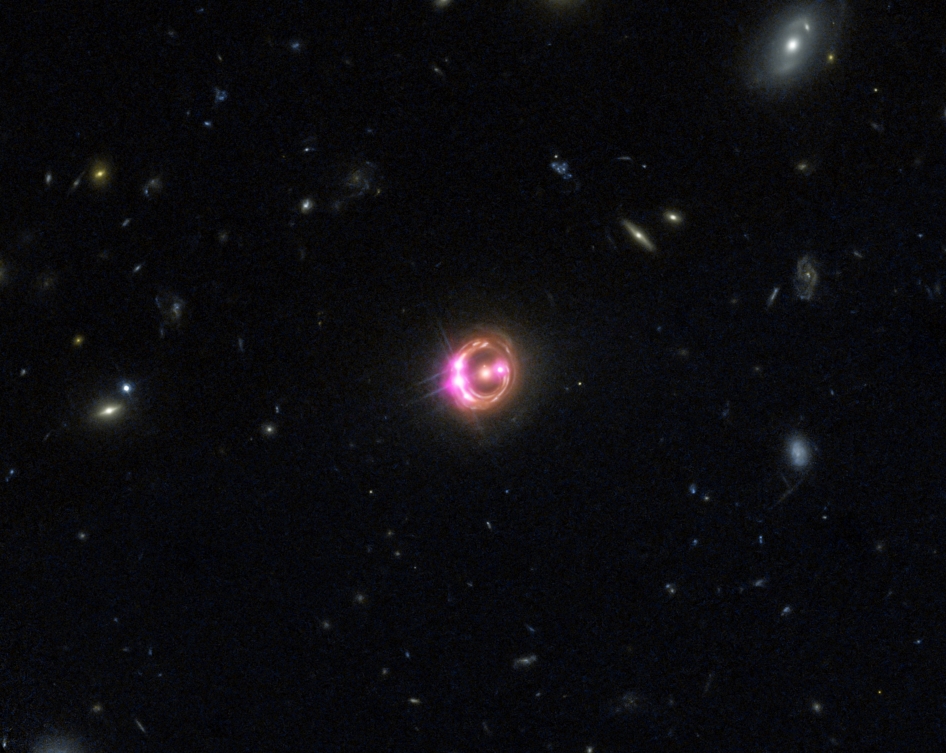THE SOUTHWORTH PLANETARIUM
207-780-4249 www.usm.maine.edu/planet
70 Falmouth Street Portland, Maine 04103
43.6667° N 70.2667° W
Altitude: 10 feet below sea level
Founded January 1970
Julian Date: 2458856.16
Julian Date: 2458856.16
2019-2020: LXXXI
"Damn, existence is brilliant!"
THE DAILY ASTRONOMER
Tuesday, January 7, 2020
Tuesday, January 7, 2020
The Most Distant Exoplanet
We're almost a full week into the new year and we haven't yet really visited Pandora's Jar. It has been tucked away in the impossible corners of the star dome collecting dust. One issue with a workplace littered with ancient amulets, terracotta jars, luminescent buttons, rotary knobs, and myriad stars is that so much exists that is easily forgotten, especially since it is all in the dark.
Anyway, onto today's astronomical query:
"What is the most distant exoplanet? Are there exoplanets in other galaxies?"
-A friend in need
-A friend in need
Greetings!
Please allow me to provide two answers to your questions. Hopefully, at least one of them will prove helpful.
First, according to astronomers, the cosmos likely harbors thousands of trillions of exoplanets. Not only do they revolve around stars in our galaxy, but one will also find them in great abundance in other galaxies, attached to stars expelled out of galaxies, and likely even millions, if not billions, of rogue planets that became detached from their parent stars and are hurtling aimlessly through the vast voids of both interstellar and intergalactic space. Astronomers base this assumption on the number of exoplanet detections they've confirmed since the advent of exoplanet astronomy in the mid 1990s: 4164 as of this writing.
The ramifications of this conclusion are so staggering that our beautifully sub-lunar, but lamentably finite, minds find it difficult to truly grasp them. Next time you're standing outside admiring the tangerine clouds in darkening twilight skies, realize that the number of worlds on which one could behold the beguiling sight of a setting star is likely greater than the number of seconds in a million years!
So, yes, planets abound throughout the ten million galactic superclusters scattered throughout the cosmos. (Thirty years ago, many people thought the Universe only contained nine planets.)
Now, the second answer involves exoplanet detections, which might have been the focus on your question. What is the most distant exoplanet yet found? How wonderful life would be if we could supply a simple answer. We can't. First, the most distant confirmed exoplanet is called SWEEPS-11. It revolves around the star SWEEPS J175902.67-291153.5, located in the constellation Sagittarius at a distance of 27,710 light years from the solar system. (It is closer to the real action around the galactic center.)
The name derives from the "Sagittarius Window Eclipsing Extrasolar Planet Search mission that located the planet in 2006. This planet is hot Jupiter planet. Its radius is 1.13 times that of Jupiter (almost 1.5 times greater in volume, but nearly ten times as massive.) It revolves around the planet once every 1.8 days and is certainly not with its parent star's habitable zone.
Next, no planet has yet been detected in another galaxy, EXCEPT (and I said this issue wasn't going to be simple) that astronomers observed a microlensing event in the Andromeda Galaxy
in 1999. During such an event, a massive foreground object causes a more distant image to be doubled and magnified due to the gravitational lensing effect. The microlensing event in Andromeda, dubbed PA-99-N2, might have provided evidence of an exoplanet. This detection remains unconfirmed. It the exoplanet's existence is ever confirmed, it would represent the first exoplanet discovered in another galaxy: about 2.1 million light years away! Again, we are certain they exist in vast numbers: the problem is detecting them from such a great distance.

Then again, in 2018, analysis of the quasar microlensing event RX J1131-1231 (see image above) might have provided evidence of 2000 rogue planets about 3.8 billion light years away! While these findings remain unconfirmed, it is likely that these will be the first rogue planets detected at such a vast distance!
To subscribe or unsubscribe from the "Daily Astronomer"